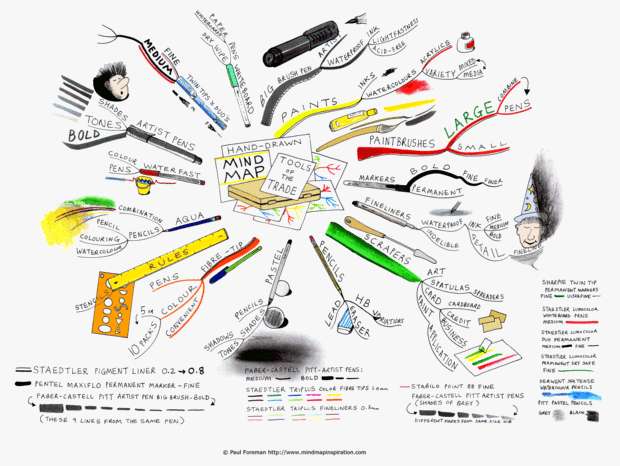Your Path to Higher Education Success
Empowering students with insights and guidance for college degrees.
Mind Mapping: The Creative Chaos Organizer
Unlock your creativity! Discover how mind mapping transforms chaos into clarity and boosts your brainstorming like never before.
What is Mind Mapping and How Can It Boost Your Creativity?
Mind mapping is a powerful visual technique that helps you organize information and ideas in a way that is both intuitive and easy to understand. Created by Tony Buzan in the 1960s, mind mapping encourages you to branch out from a central idea, using lines, colors, and images to make connections. This approach not only enhances comprehension but also boosts creativity by allowing you to explore different pathways of thought without the constraints of linear thinking. By visually representing your thoughts, you can better identify relationships and generate new ideas more effectively.
Incorporating mind mapping into your creative process can significantly enhance your brainstorming sessions. Practicing this method allows your brain to function more freely, reducing the pressure of finding the 'perfect' idea right away. Here are some benefits of mind mapping for creativity:
- It improves memory retention by connecting concepts visually.
- It encourages free-thinking and idea generation.
- It helps clarify thoughts and identify core themes.

10 Mind Mapping Techniques to Organize Your Thoughts Effectively
Mind mapping is a powerful technique that allows you to organize your thoughts effectively and visually. By creating a structured representation of your ideas, you can better analyze and recall information. Here are 10 mind mapping techniques to help you get started:
- Free Association: Start with a central idea and let your thoughts flow without restrictions.
- Concept Mapping: Link ideas and concepts through arrows and lines to show relationships.
- Image-Based Mapping: Use images and symbols to represent ideas visually for better recall.
- Color Coding: Utilize different colors to categorize and prioritize your thoughts.
- Hierarchical Mapping: Organize thoughts in a tree structure, starting from the main idea.
- Time-Line Mapping: Arrange thoughts chronologically to visualize progress and events.
- Bubble Mapping: Create bubbles for each idea, expanding and connecting them as needed.
- Keyword Association: Use single keywords to represent larger ideas for simplicity.
- Group Mapping: Collaborate with others to build a comprehensive mind map.
- Digital Mind Mapping: Use software tools to create and share digital maps easily.
The Benefits of Mind Mapping: Transforming Creative Chaos into Clarity
Mind mapping is a powerful tool that can transform creative chaos into clarity by visually organizing thoughts and ideas. This technique allows individuals to break down complex concepts into manageable segments, making it easier to understand and communicate. By using a central idea and branching out into related topics, mind mapping facilitates enhanced brainstorming sessions and fosters creativity. Whether you're a student, a professional, or an entrepreneur, implementing mind maps can help you structure your thoughts efficiently, leading to improved productivity.
One of the key benefits of mind mapping is its ability to stimulate both analytical and creative thinking. This dual approach not only aids in information retention but also encourages the generation of innovative ideas. Moreover, mind maps can be particularly useful when working on projects, as they provide a clear visual overview of tasks and milestones. By organizing information in a way that mirrors how our brains process data, mind maps promote a better understanding of relationships and hierarchies, ultimately guiding you toward achieving your goals with greater ease.